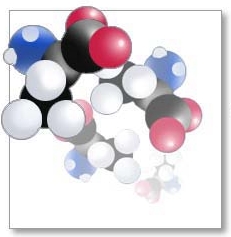Maximizing Gains With Dietary Protein

Hypertrophy Training- Maximizing Strength Results With Dietary Protein
Athletes are always looking for a competitive advantage. Whether the goal is quick recovery after a tough game/event or generating strength gains through off season training, muscle protein synthesis is a concept that all athletes should be aware of.
Muscle protein synthesis (MPS) and muscle protein breakdown provide the mechanism to trim protein components and modify protein composition within muscle fibres. MPS create periods of positive net protein balance that sum up to create hypertrophy (muscle fibre gains). Not surprising to most athletes is that resistance exercise promotes increases in MPS. But what factors for dietary protein consumption can optimize MPS and ultimately hypertrophy?
Stuart Phillips (who has co-authored more than a dozen original research papers on protein synthesis in the last 2 years!) at McMaster University discussed optimizing muscle hypertrophy in a recent review paper (reference below). To help organize some factors worthy of consideration I will pose some targeted questions.
When is the best time to consume protein?
Post-exercise protein consumption research studies are unequivocally finding an enhanced rate of MPS after exercise (such consensus is rare in any research domain!). Protein taken prior to exercise does not seem to have an effect on post exercise MPS as the amino acids are circulating in the blood at a time when muscles seem unable to utilize them. Protein should be taken as soon as possible after exercise, generally within 30 minutes of exercise for maximum benefit.
What is the best source of protein for muscle hypertrophy?
Chocolate milk has gained signficant momentum subsequent to several studies that have shown a greater post-exercise accumulation of muscle protein versus soya protein or a carbohydrate only drink. The push on chocolate milk (see interest groups such as the dairy farmers of Canada or the National Dairy Council) via funded research and media hype lies in its high quality protein (20% whey and 80% casein) and high glycemic carbohydrate components. However studies have shown that protein isolates stimulate an increase in plasma insulin that is two times greater than that produced by an intact milk protein solution. Hyperinsulinaemia, high plasma insulin levels post exercise, is known to correlate positively with muscle protein synthesis and negatively with muscle protein degradation. So yes chocolate milk is better post work out compared to soy milk or a carbohydrate only drink (Gatorade, Powerade etc), however bioavailability of the protein source is not as good compared to a protein isolate.
A leucine trigger, or threshold, also seems to be an important component of stimulating MPS. A protein isolate without adequate leucine does not result in the same degree of muscle protein stimulation. Overall the greatest post-exercise stimulation of MPS comes from a whey protein isolate (containing leucine) which can be added with frozen fruit and a low sugar fluid source (try almond milk!) for a post work out shake.
How Much Protein do I need to stimulate MPS post-exercise?
Guidelines for optimal protein prescription encompass at least 25g’s of high quality protein (again a whey isolate is best) containing at least 8-10g’s of essential amino acids and at least 1.5g’s of leucine. These studies have been generated from data from young men and aging is known to add resistance to stimulation of MPS, therefore a greater dose may be required for an older athlete.
To get this quantity of protein from chocolate milk would require you to drink approximately 750ml immediately after working out. Aside from the insulin spike that would prevent optimal MPS, gastrointestinal discomfort and dairy intolerance is a concern for many people.
Conclusion:
Post-exercise consumption of protein (at least 25g’s of a whey protein isolate within 30 minutes) is the most effective strategy to support training related MPS and promote muscle hypertrophy.
- S.M. Phillips. The science of muscle hypertrophy: making dietary protein count. Proc. Nutr. Soc. 70(1): 100-103, 2011.
- Wilkinson SB, Tarnopolsky MA, MacDonald MJ et al. (2007) Consumption of fluid skim milk promotes greater muscle protein accretion following resistance exercise than an isonitrogenous and isoenergetic soy protein beverage. Am J Clin Nutr 85, 1031–1040.
- Manninen AH. Hyperinsulinaemia, hyperaminoacidaemia and post-exercise muscle anabolism: the search for
the optimal recovery drink. Br J Sports Med. 2006;40:900–905
